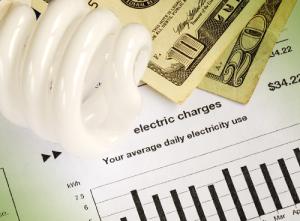February’s CPI came out March 10. And then February’s PPI came out March 15. Both indexes reflect the relatively high inflation, in consumer prices and producer prices.

The Consumer Price Index for all goods and services bought by American households was up 7.9 percent during the twelve months ending in February. 7.9 percent is rather high historically.
The CPI consists of numerous components. Each covers the price trends for a category of goods or services. The component of the CPI for electricity service, a.k.a., residential electric rates, was up by 9.0 percent over the same period.
Now let’s do a comparison. Let’s compare the inflation in the price of electricity with the inflation in the price of natural gas that is bought by utility and non-utility powerplant owners. Over the same twelve months, the price paid by powerplant owners (a component of the PPI) shot up by 66.4 percent.
How is that possible? Natural gas is by far the leading fuel to produce electricity. And, additionally, natural gas-fired powerplants are often the price-setter for all power generation in the organized markets.
Yet, while powerplant owners are paying a price that is nearly seven-tenths higher for natural gas, residential consumers are paying a price that is shy of one-tenth higher for electricity. Utilities have somehow been able to mitigate the impact of natural gas inflation on their consumers.
They have been mitigating this impact by maintaining a diverse power generation mix. They have also been contracting for natural gas over a variety of time horizons and they otherwise hedge against gas price fluctuations.
It helps that electric utilities are capital-intensive organizations. They can aptly be described as infrastructure investment vehicles. So, while the fuel costs of utilities are significant, they’re just one slice of a utility’s overall costs that are ultimately reflected in consumer rates.
Just look at some of the other components of the CPI. The component for natural gas service, a.k.a., residential gas rates, was up by 23.8 percent over the same period. Gas utilities aren’t as able to insulate their customers from the ups and downs in the world oil and gas markets. The component for fuel oil, a.k.a., residential heating oil, was up by 43.6 percent over the same period.
Which brings us to the precarious energy situation of our European allies in the face of the Russian Federation’s invasion of Ukraine. The electric utilities over there are evidently less able to insulate their consumers from the ups and downs of oil and gas. Including because their oil and gas sources are fewer, and some are more tenuous.
It shall be interesting to see how our allies in Europe rethink their energy position and vulnerabilities. And particularly what actions they’ll take to ensure the reliability and affordability of energy as well as its sustainability.

